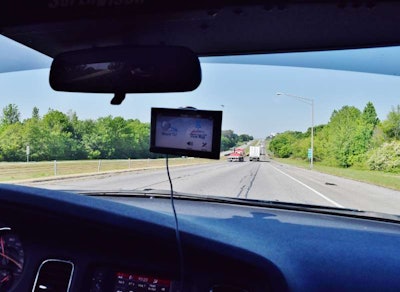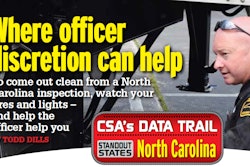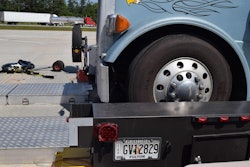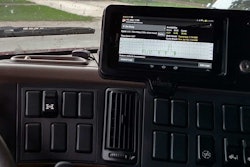
Or en route, as it were. There are plenty of ways, notes Landstar-leased owner-operator Gary Buchs, to avoid getting that roadside Level 3 or, worse yet, a citation for a moving violation such as speeding, even if you get stuck out in the left lane during a pass in a high-traffic, urban area.
Avoid drawing attention to yourself in any way whatsoever. In addition to such tried-and-true things like keeping the truck as buttoned-up as possible and catching obvious things on pre-trips like lights that have gone out, “there’s a way,” too, says Buchs, “to maneuver to the left lane and not draw attention to yourself.” If there’s congestion, “you may have to pass, but pass at a reasonable speed, or lower than the speed limit” or than the speed limit that conditions suggest. Should you get caught out in the left lane, ultimately, “don’t be afraid to put that right blinker back on to show that you are trying to get back in. – There are ways to navigate those urban areas using good space management. Don’t crowd people and draw attention to yourself. Look alert.”
If you are stopped… Contrary to road rumor, certified inspecting officers in most states are not in fact limited to probable-cause-type stops for inspections, meaning they don’t need a particular reason (such as a visible infraction) to stop you to inspect. In Indiana and Illinois, for instance, where the vast majority of inspections occur far from fixed facility like a weigh station, high-level representatives in the state police confirm that, contrary to what many believe, they aren’t limited by statute to probable-cause stops. At once, the nature of most mobile enforcement is targeted, meaning if there’s something visibly wrong with the truck (a light out, obviously slick tires, etc.) or a behavior that contravenes a traffic law, your odds of getting stopped just went up dramatically, particularly in states where mobile enforcement accounts for a majority of inspections.
1) Put on your four-ways to acknowledge the officer’s presence. Stay aware of surroundings and you’ll quickly see lights in the side view — key to starting off any roadside stop right. Inspecting state police trooper C.V. Barrett of North Carolina, in his “mock truck inspection” talk at the TCA Safety and Security Division annual meeting last month (find a gallery of photos at bottom), noted that when he turns on his overhead lights, he’s usually got a safe place for a truck to stop in mind up ahead. Lt. Lee Robertson of Georgia echoed the sentiment.
But if there is not good spot that you can easily or quickly identify, don’t just stop in the middle of the travel lane, both say. “I’ll follow somebody 2-3 miles down the road” without a problem, said Barrett, “if he clearly knows I’m back there.”
It’s not uncommon for Robertson, he said, after the initial stop, to instruct the driver to keep going to a better location that won’t impede traffic at all.









